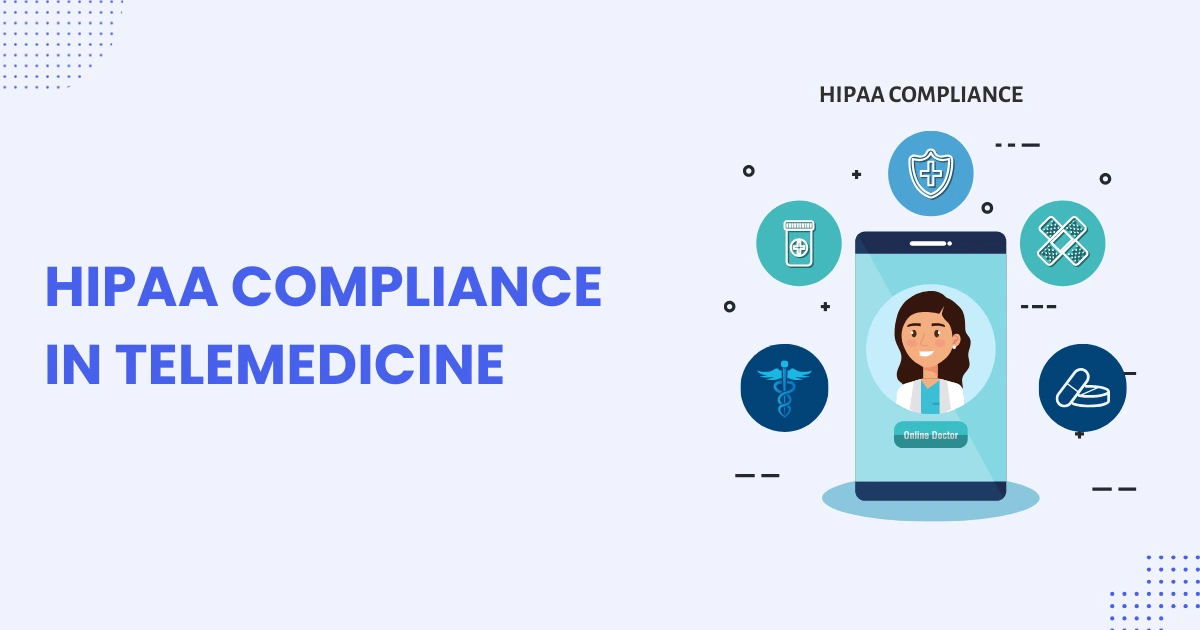Table of Contents
- Introduction
- 1. What is HIPAA and Why is It Important in Telehealth?
- 2. Key HIPAA Requirements for Telemedicine
- 3. Ensuring HIPAA Compliance in Telehealth Services
- 4. Benefits of HIPAA Compliance for Healthcare Providers
- 5. Common Challenges and How to Overcome Them
- 6. HIPAA-Compliant Telemedicine Platforms
- Conclusion and Best Practices
Introduction
The shift towards telehealth has transformed the way healthcare is delivered, offering convenience and accessibility to patients and providers alike. However, as healthcare goes digital, ensuring data security becomes critical. Enter HIPAA compliance in telemedicine – a set of standards designed to protect sensitive patient information. But what does it really entail, and why is it important for telehealth providers? Let’s dive into this beginner’s guide to secure virtual care.
1. What is HIPAA and Why is It Important in Telehealth?
The Health Insurance Portability and Accountability Act (HIPAA) was enacted in 1996 to protect sensitive patient information, ensuring privacy and security in healthcare. With the rise of telemedicine, maintaining compliance has become essential to:
- Safeguard Protected Health Information (PHI).
- Build trust with patients by prioritizing data security.
- Avoid hefty penalties for non-compliance.
For example, imagine a telehealth session where a patient’s medical history is discussed. If this information is intercepted due to inadequate security measures, it could lead to severe consequences for both the patient and the provider.
2. Key HIPAA Requirements for Telemedicine
To ensure HIPAA compliance in telemedicine & White-label Telemedicine, providers must adhere to several rules:
- Privacy Rule: Protects PHI and limits its disclosure without patient consent.
- Security Rule: Requires administrative, physical, and technical safeguards for electronic PHI (ePHI).
- Breach Notification Rule: Mandates reporting any PHI breaches to affected individuals and authorities.
- Business Associate Agreements (BAAs): Ensure third-party vendors handling PHI comply with HIPAA standards.
Example: A telehealth provider must use encrypted platforms for video consultations to prevent unauthorized access to patient data.
3. Ensuring HIPAA Compliance in Telehealth Services
Here’s a step-by-step guide to achieving HIPAA compliance:
- Conduct a Risk Assessment: Identify potential vulnerabilities in your telehealth system.
- Use Secure Communication Tools: Opt for platforms with end-to-end encryption.
- Train Staff: Educate employees on HIPAA regulations and data security practices.
- Implement Access Controls: Restrict access to PHI based on roles and responsibilities.
- Establish Data Backup and Recovery Plans: Ensure data integrity in case of system failures.
4. Benefits of HIPAA Compliance for Healthcare Providers
Being HIPAA-compliant doesn’t just mitigate risks; it also offers several advantages:
- Enhanced Patient Trust: Patients are more likely to choose providers who prioritize data security.
- Operational Efficiency: Standardized processes improve data handling and reduce errors.
- Legal Protection: Compliance shields providers from legal and financial repercussions.
5. Common Challenges and How to Overcome Them
Implementing HIPAA compliance can be challenging. Here are common hurdles and solutions:
| Challenge | Solution |
|---|---|
| Lack of technical expertise | Partner with IT professionals experienced in healthcare compliance. |
| Cost of implementing secure systems | Explore scalable, cost-effective telehealth solutions tailored for small practices. |
| Keeping up with evolving regulations | Stay updated with guidance from the Department of Health and Human Services (HHS). |
6. HIPAA-Compliant Telemedicine Platforms
Several platforms are designed to meet HIPAA standards:
- vDoctor: Offers a comprehensive, cloud-based, HIPAA-compliant, white-label telemedicine software platform for seamless online/offline doctor appointments with video consultations.
- Jitsi for Healthcare: Offers encryption and HIPAA-compliant features.
- Doxy.me: Tailored for secure telehealth sessions.
- SimplePractice: Combines telehealth tools with practice management features.
Tip: Always verify that a platform signs a Business Associate Agreement (BAA) before use.
Conclusion and Best Practices
HIPAA compliance in telemedicine is not just a regulatory requirement but a commitment to patient safety and trust. By following best practices, such as using secure platforms and training staff, healthcare providers can deliver safe and reliable virtual care.
Key Takeaways:
- Understand and implement HIPAA rules for telehealth.
- Choose HIPAA-compliant platforms.
- Regularly update your policies and technologies to stay compliant.
